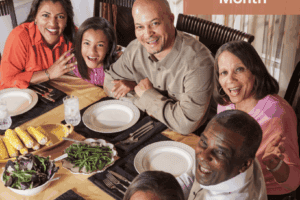Lunch plays a critical role in children’s overall health and school performance. Whether they are eating lunch at home, enjoying a school-provided lunch or packing a lunch box, the goal is a nutrient-rich meal to fuel their brains and bodies for the afternoon.The benefits associated with healthy eating include a decreased risk of developing chronic diseases, such as Type 2 diabetes, hypertension and certain cancers; and a decreased risk of being overweight and obese.According to Colorado health surveys of children and adolescents, only 11 percent of Colorado children age 1 to 14 consume the recommended servings of fruits and vegetables each day; and 24 percent of youth age 15 to 19 consume the five or more servings of fruits and vegetables per day. Additionally, two-thirds of Colorado children age 1 to 14 eat fast food one or more times per week.School lunches are a chance to teach children healthy eating habits. Explain how a nutritious lunch will give them energy to finish the school day and enjoy after school activities. Be sure to check with your child’s school to find out if there are restrictions on what students can pack in their lunches. Involve your child in creating a weekly menu so you can choose different foods that your child likes.A healthy diet includes a variety of nutrient-dense foods, especially whole grains, fruits, vegetables, low-fat or fat-free milk or milk products; and lean meats or other protein sources. Saturated and trans fats, cholesterol, added sugars and salt should be limited. Take a look at the federal government’s new food icon, “MyPlate” at http://ChooseMyPlate.gov to learn more about how to build a healthy plate at meal times. The new “MyPlate” icon emphasizes the fruit, vegetable, grains, protein and dairy food groups.Here’s a lunch formula from the Centers for Disease Control and Prevention for the power and energy your child needs to make it through the day:
- Lots of fruits and vegetables (such as carrot sticks, celery or apples)
- A container of milk or yogurt, or some cheese
- Some whole-grain bread for a sandwich, cereal mix or pasta (like spaghetti)
- Some meat (like ham or chicken), tuna fish, hard-boiled eggs, beans (like a bean burrito) or nuts/trail mix
- A little bit of dessert (such as pudding or graham crackers)






